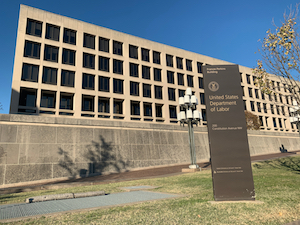 Allowing private equity investments in professionally managed funds within 401(k)s—an idea that has been promoted by some for the better part of the past decade—has been given the stamp of approval by the Department of Labor.
Allowing private equity investments in professionally managed funds within 401(k)s—an idea that has been promoted by some for the better part of the past decade—has been given the stamp of approval by the Department of Labor.
In a June 3 Information Letter, Louis Campagna, head of the Division of Fiduciary Interpretations at the Employee Benefits Security Administration’s Office of Regulations and Interpretations, affirms that private equity investments as a component of a professionally managed multi-asset class vehicle structured as a target date, target risk or balanced fund can be offered as an investment option for participants in defined contribution plans under ERISA.
Campagna's letter to Jon Breyfogle of the Groom Law Group explains that “a plan fiduciary would not, in the view of the Department, violate the fiduciary’s duties under section 403 and 404 of ERISA solely because the fiduciary offers a professionally managed asset allocation fund with a private equity component as a designated investment alternative for an ERISA covered individual account plan in the manner described in this letter.”
The letter responds to an inquiry by Breyfogle asking for the DOL’s views on behalf of Pantheon Ventures and Partners Group on the use of private equity investments in designated investment alternatives made available to participants and beneficiaries in individual account plans, such as 401(k) plans, subject to ERISA.
“This letter should assure defined contribution plan fiduciaries that private equity may be part of a prudent investment mix and a way to enhance retirement savings and investment security for American workers,” stated Acting Assistant Secretary Jeanne Klinefelter Wilson, who now heads the Employee Benefits Security Administration following the May 29 departure of former EBSA Assistant Secretary Preston Rutledge.
Private equity investments have long been part of the investment portfolios used by defined benefit plans to boost returns and manage volatility, but they generally have not been incorporated into investment funds used by DC plans.
“For decades, institutional investors like traditional pension plans and endowments have invested in private equity, but 401(k) plan fiduciaries have been reluctant to add the asset class to their plans in the absence of specific guidance from DOL,” Breyfogle said in a statement. “The Information Letter released today is important because it gives fiduciaries more legal certainty if they want to consider additional asset classes as part of a diversified 401(k) investment option.”
And while the DOL’s guidance approves of the use of private equity investments in professionally managed investment funds, it does not authorize making such investments available for direct investment on a standalone basis.
Fiduciary Considerations
The letter outlines the considerations that fiduciaries should undertake when evaluating the risks and benefits, noting that private equity investments present additional considerations to participant-directed plans that are different than those involved in DB plans.
Among them are comparing the asset allocation fund with appropriate alternative funds that do not include a private equity component and assessing anticipated opportunities for investment diversification and enhanced investment returns, as well as the complexities associated with the private equity component.
The assessment should also include whether the fund is overseen by plan fiduciaries (using third-party investment experts as necessary) or managed by investment professionals that have the “capabilities, experience, and stability to manage a fund that includes private equity investments effectively, given the nature, size and complexity of the private equity activity.”
The letter also cites whether the fund has adopted features related to liquidity and valuation designed to permit the asset allocation fund to provide liquidity for participants to take benefits and direct exchanges among the plan’s investment lineup consistent with the plan’s terms.
The fiduciary must also determine whether plan participants will be furnished adequate information regarding the character and risks of the investment alternative to enable them to make an informed assessment regarding making or continuing an investment in the fund, the letter explains. It further emphasizes that this would be especially important in the case of a plan fiduciary claiming limited fiduciary liability under ERISA section 404(c) and/or for deciding that a particular investment alternative would be prudent to use as a QDIA.
The letter does include a footnote noting that the guidance does not address any potential prohibited transaction issues under section 406 of ERISA or the application of any statutory or administrative prohibited transaction exemptions that may need to be considered.

